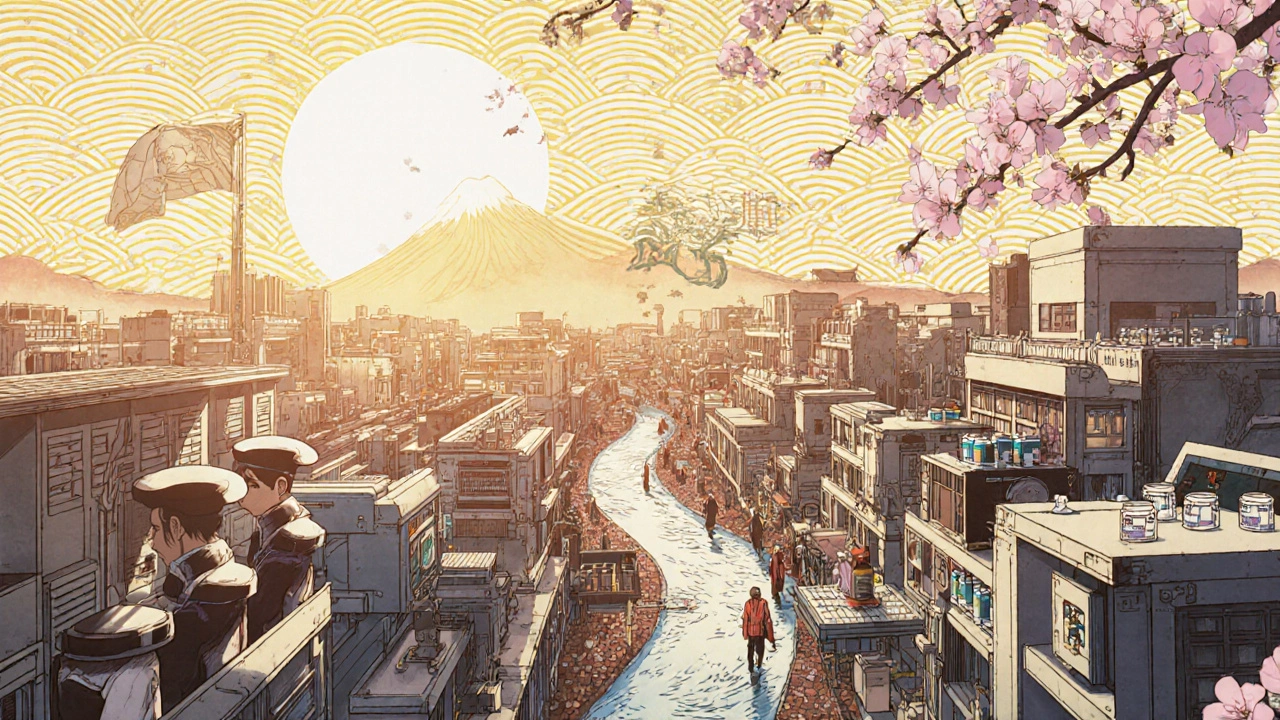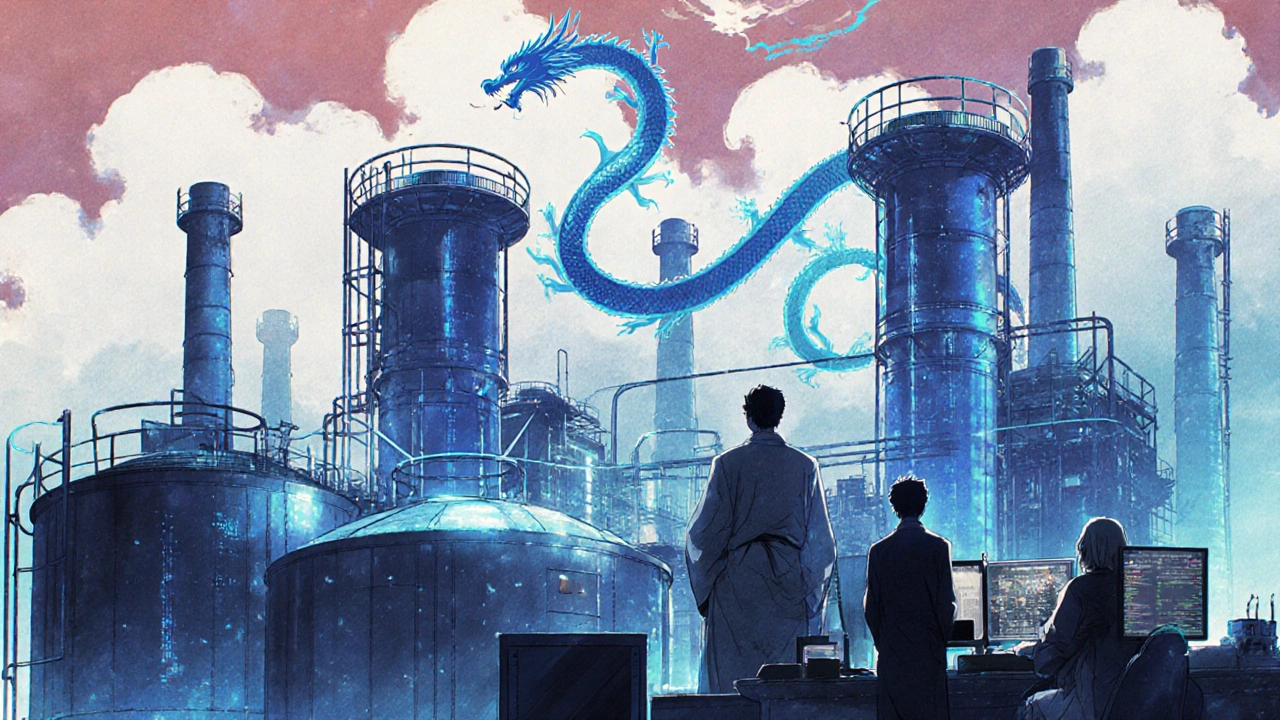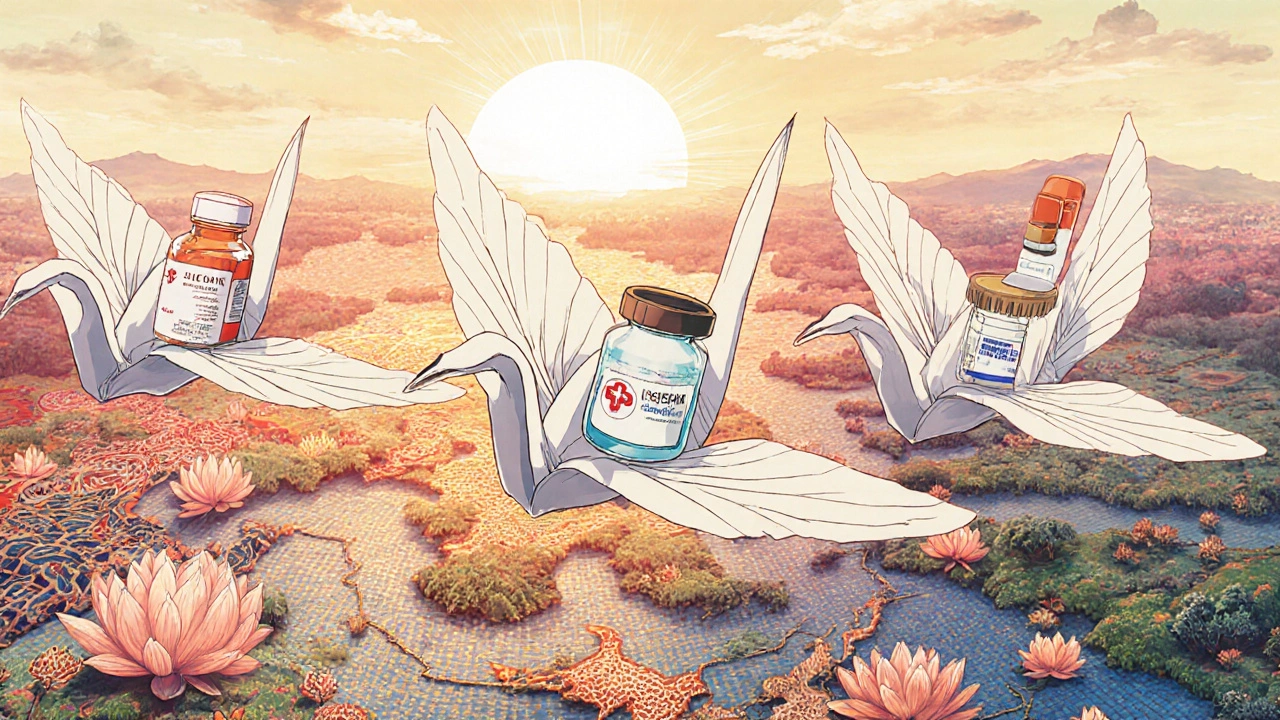Asian Generic Pharmaceutical Markets: India, China, and Emerging Economies Explained

When you pick up a bottle of antibiotics or a blood pressure pill, there’s a good chance it came from Asia. Not from a fancy lab in Switzerland or the U.S., but from a factory in Gujarat, Jiangsu, or Ho Chi Minh City. The global supply of affordable generic medicines runs on two big engines: India and China. And behind them, a new wave of players - Vietnam, Cambodia, Indonesia - are stepping in with niche strengths. This isn’t just about cheap drugs. It’s about who controls the building blocks of global health, how quality varies, and where the next big shifts are coming.
India: The Volume King with a Quality Edge
India makes more generic medicines than any other country on earth - by volume. It supplies over 60% of the world’s vaccines and 40% of all generic drugs sold in the U.S. That’s not luck. It’s policy. Back in the 1970s, India changed its patent laws to let companies copy drug formulas as long as they used a different manufacturing process. That opened the floodgates for affordable versions of expensive Western drugs. Today, that legacy is worth $61.4 billion in 2024.
Most of India’s output is basic generics - pills you take every day. About 75% of its pharmaceutical market is made up of these low-cost, high-volume drugs. The rest? Over-the-counter meds and a small but growing slice of specialty drugs like cancer treatments. The real power? Manufacturing. India has over 3,000 facilities approved by the U.S. FDA. That’s more than any country outside the U.S. itself. And they’re spread across states like Gujarat and Maharashtra, where factories run 24/7.
But here’s the catch: India doesn’t make its own active ingredients. Over 68% of the raw chemical components - called APIs - still come from China. That’s a huge vulnerability. In 2024, India launched ‘Pharma 2047,’ a $13.4 billion plan to cut that dependence to 30% by 2030. Twelve new API parks are under construction. Will it work? Only time will tell.
What keeps buyers coming back? Communication. U.S. pharmacy chains report that Indian suppliers respond faster, handle custom requests in 14 days (versus 30+ for China), and offer 24/7 customer support. That’s why Indian suppliers score 4.1/5 on Trustpilot, compared to China’s 3.8. When your supply chain depends on consistency, that matters.
China: The Value Giant Behind the Scenes
If India is the factory floor, China is the power plant. It controls 70% of the world’s Active Pharmaceutical Ingredients (APIs). That means nearly every generic drug made - whether in India, Brazil, or Germany - likely started as a chemical compound made in a factory in Jiangsu or Zhejiang.
China’s pharmaceutical market is bigger - $80.4 billion in 2024 - and growing faster in dollar terms, even if its volume growth is slower. Why? Because China is moving up the value chain. It’s not just making cheap pills anymore. It’s producing biologics, biosimilars, and even some novel drugs. In fact, 45% of new manufacturing plants built between 2020 and 2024 were for biologics. That’s a strategic pivot.
China’s government is pouring $150 billion into pharmaceutical innovation under its 14th Five-Year Plan. Forty percent of that is going straight to biologics R&D. The goal? By 2030, 25% of China’s pharmaceutical exports should be high-value products - up from just 8% in 2024. That’s not just about profits. It’s about control.
But quality has been a problem. In 2024, the U.S. FDA issued 142 warning letters to Chinese manufacturers - more than double India’s 87. That’s why big buyers now dual-source: they get 60% from India, 30% from China, and keep a backup. One German healthcare company said this strategy added 18% to their supply chain costs. But they’d rather pay more than risk a shortage.
China’s advantage? Scale and cost. Their API prices are often 20% lower than India’s. And their regulatory process is faster - approvals take 12-18 months, compared to India’s 18-24. But there’s a trade-off: you need a local partner with 51% ownership to sell in China. That’s a barrier for foreign companies.
Emerging Economies: Niche Players, Big Impact
India and China dominate the headlines, but the real story is happening in the shadows. Vietnam, Cambodia, Indonesia - these countries aren’t trying to outsize the giants. They’re carving out niches.
Vietnam’s pharmaceutical market grew 12.3% annually from 2020 to 2024. How? By specializing in antibiotic intermediates - the chemical building blocks for life-saving drugs. It’s a small piece of the puzzle, but critical. In 2024, Vietnam exported $2.8 billion in pharma products - up 24.7% from the year before.
Cambodia? It’s not making pills. It’s assembling medical devices - syringes, IV bags, glucose monitors. Its sector grew 32% in 2024 to $1.2 billion, thanks to preferential trade deals within ASEAN. These aren’t glamorous industries, but they’re stable, labor-intensive, and growing fast.
Why now? Because global buyers are tired of relying on just two countries. After pandemic-era disruptions, companies want backup suppliers. Emerging economies offer lower labor costs, fewer regulatory hurdles, and faster turnaround times for specialized products. They’re not replacing India and China. They’re making the system more resilient.

Who Wins? Volume vs. Value
India and China play different games. India wins on volume. It’s the world’s top exporter of generic pills - 20% of the global market share. But it ranks only 14th in market value. That means it sells a lot of cheap stuff.
China wins on value. It’s second in global market size and leads in API production. It’s exporting more high-margin products - biologics, complex injectables - and its exports are growing in dollar value faster than India’s. In 2024, China’s pharmaceutical exports hit $48.7 billion. India’s? $24.2 billion. But China’s exports are only 63% generics. India’s? 87%.
That’s the core difference: India sells pills. China sells the ingredients for pills - and increasingly, the pills themselves.
India’s growth forecast is higher - 8.1% to 11.3% CAGR through 2030. But China’s growth is happening on a much larger base. So while India’s market may hit $130 billion by 2030, China’s is expected to reach $126.6 billion. The gap isn’t closing. It’s just shifting.
The Real Challenge: Quality Under Pressure
Here’s what no one talks about enough: regulators are catching up.
The U.S. FDA’s ‘Project BioSecure,’ launched in late 2024, demands full traceability of every API from source to shelf. That means factories in India and China now need digital tracking systems, real-time monitoring, and certified documentation. Compliance costs could jump 18-22%.
And the WHO reported a 27% increase in inspection failures at Asian facilities in 2024 compared to 2023. That’s not a coincidence. It’s a reaction to rapid expansion. Factories are being built faster than quality systems can keep up.
India struggles with fragmented regulation. There are 17 different agencies across states - some are strict, others are slow. One procurement officer told us: ‘We’ve waited six months for a single approval because one state office was understaffed.’
China’s system is more centralized, but enforcement is inconsistent. A factory in Shanghai might pass an FDA audit. One 200 miles away might get a warning letter. That’s why dual-sourcing isn’t just smart - it’s necessary.

What’s Next? The Battle for the Future
India’s advantage? Its population. Two-thirds of its people are under 35. That means a growing domestic market for drugs, more young engineers, and a digital health boom. In 2024, India invested $2.8 billion in digital health tech - telemedicine, AI diagnostics, e-prescriptions. That could become its next export.
China’s advantage? Money. It’s spending $22.8 billion on biologics under ‘Healthy China 2030.’ It’s building labs, hiring scientists, and buying foreign tech. It doesn’t need to copy anymore. It’s innovating.
But both face the same risk: overproduction. S&P Global warns that by 2026-2027, too many API factories could flood the market, triggering 15-20% price drops. That would hurt profits. And if prices fall too far, quality could slip.
The winners won’t be the biggest factories. They’ll be the ones that combine scale with control - like Sun Pharma’s $450 million Gujarat plant, which uses German quality standards to hit 98.7% FDA compliance. That’s the new benchmark.
Bottom Line: It’s Not Either/Or - It’s Both/And
There’s no single winner in Asia’s generic pharma race. India delivers volume, speed, and communication. China delivers scale, cost, and rising quality. Emerging economies add resilience.
For buyers - hospitals, pharmacies, governments - the smart move isn’t choosing one country. It’s building a network. Rely on India for fast, reliable generics. Use China for bulk APIs and emerging biologics. Tap Vietnam for antibiotics and Cambodia for devices.
The global health system depends on this balance. If one country falters, others step in. That’s not weakness. That’s strength.
